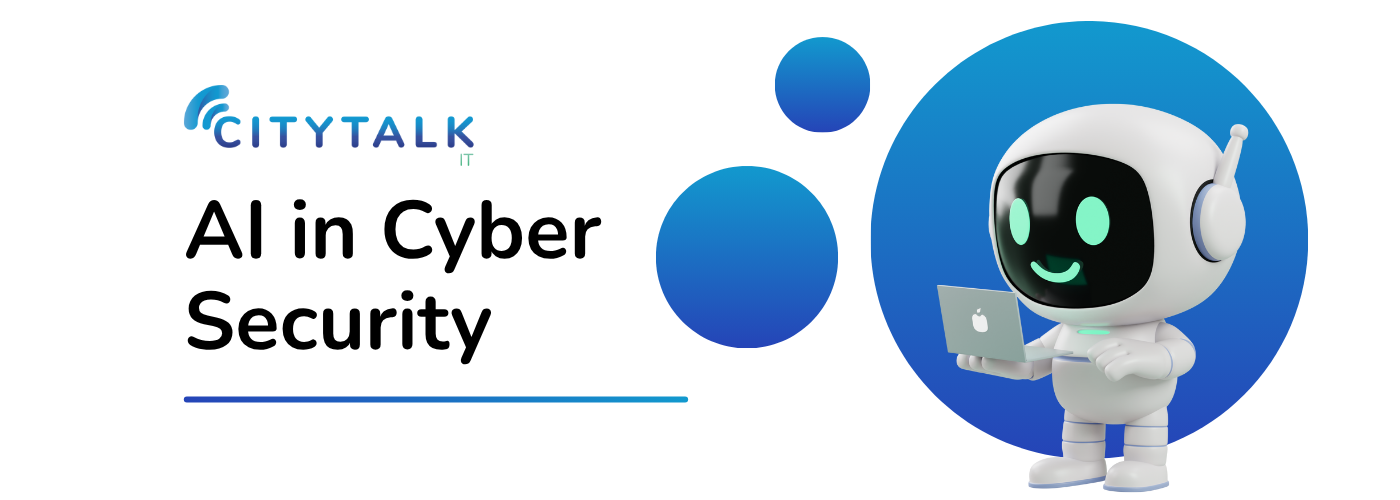
Contents
AI in Cybersecurity: Threat or Benefit?
In the ever-evolving world of cyber risk, one question is increasingly urgent: Is artificial intelligence (AI) in cybersecurity a danger or a lifeline? The answer is both. AI is shifting the balance between attackers and defenders and businesses need to understand how to use it wisely.
What It Means When We Talk About AI in Cybersecurity
“AI” here usually refers to machine learning, statistical models, and pattern recognition used to analyse massive datasets, detect anomalies, and automate responses. These techniques aren’t magic, but they do scale analysis and decisioning far beyond what humans alone can manage.
In cybersecurity, AI can:
-
Monitor network traffic, authentication logs, endpoint events, and detect deviations from “normal” behaviour.
-
Automate triage, flag suspicious events, or isolate compromised systems.
-
Predict where attackers might strike next, based on historical patterns.
-
Continuously learn and adapt, refining detection models as new threats emerge.
But it’s important to recognize that AI doesn’t replace human judgment, it augments it. The most effective systems leverage AI + oversight, rather than “set and forget.”
The Benefits: What AI Brings to the Defence Side
AI offers several powerful advantages — especially in a world where attackers are moving faster than ever.
1. Speed & scale of detection
AI can sift through huge volumes of logs, events, and data in real time to flag anomalies that humans would miss or detect too late.
2. Smarter prioritisation, fewer false positives
Traditional security tools often overwhelm analysts with alerts. AI models can rank alerts by severity, reducing noise and focusing human attention where it’s most needed.
3. Proactive / predictive defences
Instead of only reacting, AI can forecast likely attack vectors (zero-days, anomalous behaviour) and help pre-empt breaches.
4. Automation and efficiency gains
By automating repetitive tasks (log analysis, triage, patch scanning), AI frees cybersecurity teams to handle higher-value work.
5. Dynamic adaptation
AI models can evolve as attackers evolve, giving defenders flexibility in a rapidly changing threat landscape.
Empirical studies also back this up: AI-augmented systems have shown improved detection, fewer breach costs, and stronger resilience compared to legacy-only defences.
The Risks & Threats: How AI Can Be Weaponised or Misled
However, the same capabilities that benefit defenders can also empower attackers — or even backfire. Below are key risk areas to watch:
1. Adversarial attacks / evasion
Attackers can craft inputs designed to fool AI models — subtly perturbing data so anomalies are missed or misclassified.
2. Poisoning or back-door manipulation
If the training data or feedback loops are corrupted, attackers could poison models — inserting vulnerabilities or hidden triggers.
3. AI-powered offensive tools
AI doesn’t only serve the defence. Attackers use generative AI to:
-
Craft convincing phishing or social engineering content, with realistic language and personalization.
-
Generate deepfake audio, video, or impersonation attacks to trick staff or manipulate identity verification.
-
Automate vulnerability scanning, exploit chaining, or malware generation at scale.
This dual-use nature means defenders and attackers are now in a tech arms race.
4. Explainability, transparency, and trust
Many AI models are opaque (“black box”), making it hard to validate or audit why decisions were made, which raises compliance and accountability concerns.
5. Resource, talent, and maintenance burden
Implementing secure, reliable AI requires infrastructure, robust data pipelines, ongoing tuning, and specialists, which can be expensive and complex.
6. Increased threat volume & sophistication
Because AI lowers barriers, more attackers (even amateurs) can deploy sophisticated campaigns, increasing the frequency, scale, and subtlety of attacks.
Indeed, a recent Microsoft report noted a surge in state actors using AI to generate fake content, phishing, and cyberattacks, a sign that the threat landscape is accelerating.
The UK’s NCSC similarly warns that AI will make scam emails harder to detect and is likely to increase attack volume. You can find out more about NCSC’s warning against scam emails here.
Striking the Balance: Best Practices & Strategic Approach
Given the dual nature of AI, the goal isn’t to reject it, but to adopt it thoughtfully and defensively. Here’s how:
-
Human + AI partnership: Use AI for speed and scale, but always layer in human review and oversight.
-
Adversarial resilience: Train models with adversarial techniques, monitor for drift, and validate inputs.
-
Layered security posture: AI is one tool , combine with zero-trust architecture, strong identity controls, network segmentation, encryption, and staff training.
-
Explainability & auditability: Whenever possible, use models that support interpretability or confidence scoring.
-
Continuous testing & red teaming: Simulate attacks (including AI-driven ones) to stress your defenses.
-
Governance & oversight: Maintain clear policies on AI usage, data sourcing, privacy, and accountability.
In short: use AI to amplify your defense, not replace it , and always plan for the attacker side to co-opt the same tools.
In Conclusion
AI in cybersecurity is not a simple “threat or benefit” binary. It’s both, a force multiplier for defenders and a powerful tool for attackers. For organisations, the question isn’t whether to use AI, but how wisely and securely to leverage it.
If your systems lack AI-based detection or if your existing tools haven’t yet been hardened, you’re already falling behind. Attackers are innovating fast; defenders must match pace.



